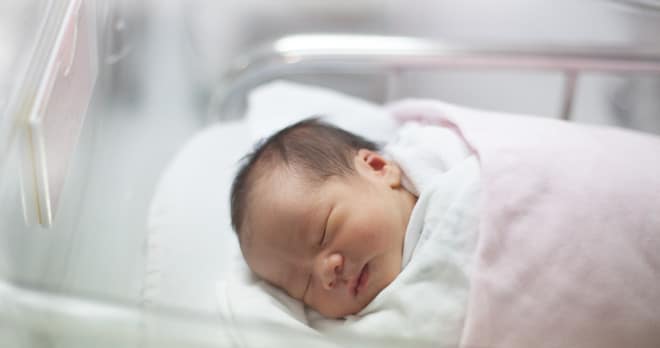Delayed diagnosis of Developmental Dysplasia of the Hip

Professor Nicholas Clarke, Consultant Orthopaedic Surgeon, at Southampton University hospital has warned against the practice of tightly swaddling babies in blankets to avoid problems with their hip development.
The practice of tightly swaddling babies is said to be increasing in popularity in recent time as it is perceived to have a calming effect for the baby and remind them of the sensation of being in the womb. Whilst this is attractive to parents, Professor Clarke warns that babies’ legs should not be wrapped tightly and pressed together as this can be detrimental to healthy hip development. He states:
“In order to allow for healthy hip development, legs should be able to bend up and out at the hips. This position allows for natural development of the hip joints"
By tightly swaddling a baby it holds their legs out straight and restricts movement which can affect hip development. The practice of tightly swaddling a baby is thought to be linked, in particular, with Developmental Dysplasia of the Hip (DDH), a condition where there is general instability or looseness of the hip joint. If a baby or young child develops dysplasia of the hip they will require prompt treatment to avoid ongoing disability.
Delayed Diagnosis:
With the practice of tightly swaddling babies increasing in popularity it could therefore potentially lead to an increase in babies suffering from DDH. This brings back to the forefront of my mind the importance that medical professionals are alert to signs of hip dysplasia when examining babies and young children.
As medical negligence solicitors we have acted for several children who have suffered very significant and lifelong injuries as a result of a delayed diagnosis of Developmental Dysplasia of the Hip.
By way of example, a colleague of mine acted for A, a 17 year old girl, who suffered injury due to delayed diagnosis and inadequate treatment of DDH. After she was born she underwent the usual routine examinations of her hips and no abnormalities were detected. As A got older her mother started to become very concerned that her left foot was inverted and she was dragging her foot when trying to walk. She took A to her GP who referred her to hospital and she was diagnosed with a dislocated left hip at the age of 13 months. She required 4 operations over the next 8 months but the Surgeons were unable to fully reduce her hip.
It was alleged that there was a delayed diagnosis of the condition as signs had been present earlier, and also that the initial treatment undertaken once the condition was diagnosed was inadequate. As a result A was left with a permanent dysplastic left hip. She suffered ongoing pain, walked with a limp and was unable to partake in many physical activities. A will require several hip replacement procedures during her lifetime and she will be restricted in the type of work she can undertake.
The evidence in the cases we have pursued is clear that there are definite signs and symptoms of DDH which should be spotted by a medical professional carrying out a competent examination of a young child. These signs include, but are not limited to, unequal leg length, talipes and an unusual limp or gait when walking. The evidence is also clear that with prompt diagnosis of the condition and good treatment the child can achieve an excellent outcome. If there is a delayed diagnosis this can have severe consequences for the child.
It is therefore vital to reduce the risk of DDH and also to ensure prompt diagnosis of the condition if it does develop because it can lead to significant injury to the child if not diagnosed and treated promptly. We hope therefore that medical professionals will remain very alert to the possibility of DDH when examining babies and young children, particularly if there is evidence that the baby has been tightly swaddled.